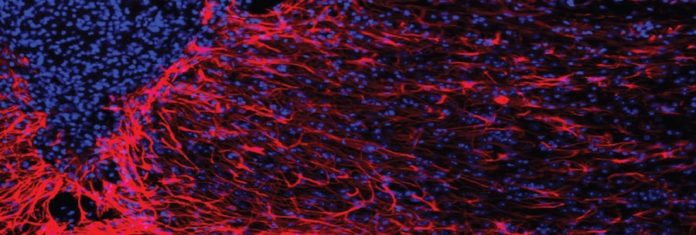Brain Iron Accumulation Linked Huntington’s Disease
In addition to their well-established role in providing the cell with ATP, mitochondria are the source of iron-sulfur clusters (ISCs) and heme – prosthetic groups that are utilized by proteins throughout the cell in various critical processes. The post-transcriptional system that mammalian cells use to regulate intracellular iron homeostasis depends, in part, upon the synthesis of ISCs in mitochondria.
Mitochondrial dysfunction is a prominent feature of many neurodegenerativediseases. Iron is vital to cell survival, but its levels must be tightly regulated since mishandled iron can lead to generation of reactive oxygen species (ROS) with deleterious consequences for the cell.
Several neurodegenerative disorders are now being found to be characterized by mitochondrial dysfunction and brain iron accumulation. Many neurodegenerative diseases are marked by mitochondrial impairment, brain iron accumulation, and oxidative stress – pathologies that are inter-related.
Now, scientists have demonstrated how accumulation of mitochondrial iron in the brains of animal models has resulted in increased expression of iron uptake protein mitoferrin 2 and decreased iron-sulfur cluster synthesis protein frataxin- thereby leading to the onset of huntington’s.
The research identifying a pathway for the neurodegenerative disease also has relevance to understanding related disorders such as Parkinson’s disease, Alzheimer’s and Lou Gehrig’s disease, says Jonathan Fox, a professor in UW’s Department of Veterinary Sciences.
They experimented with a drug that crossed the mitochondrial membrane and removed excess iron, or it may bind with the iron and make it nontoxic. The Fox lab members collaborated with Thyagarajan, who has expertise in evaluating mitochondrial functions, to measure oxygen consumption in mouse HD mitochondria.
They found oxygen deficits in HD mitochondria with unusual amounts of iron. The research suggests iron accumulation in mitochondria interferes with respiration and oxygen uptake, and that this may contribute to neuronal malfunction and death.
Fox says the research helps lay the foundation for developing drug therapies. Fox’s research involves studying mainly mouse models of HD; however, the researchers also obtain human brain tissue collected at autopsies and supplied by a National Institutes of Health-supported brain bank.
The team further intends to understand the mechanisms by which iron causes mitochondria dysfunction in HD. The other, broader aspect is that HD is part of a group of related diseases, and “while they don’t have identical mechanisms, they do have some important features in common,” Professor Fox says.






























